
The Angles were one of the main Germanic peoples who settled in Great Britain in the post-Roman period. They founded several kingdoms of the Heptarchy in Anglo-Saxon England. Their name is the root of the name England. According to Tacitus, writing around 100 AD, a people known as Angles (Anglii) lived east of the Lombards and Semnones, who lived near the Elbe river.

John Edward Masefield was an English poet and writer, and Poet Laureate from 1930 until 1967. Among his best known works are the children's novels The Midnight Folk and The Box of Delights, and the poems The Everlasting Mercy and "Sea-Fever".
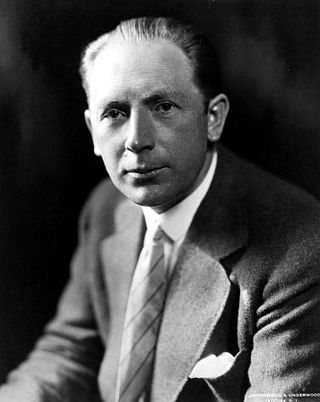
Friedrich Wilhelm Murnau was a German film director, producer and screenwriter.
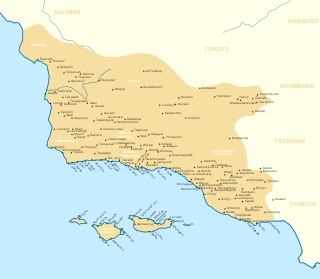
The Chumash are a Native American people of the central and southern coastal regions of California, in portions of what is now San Luis Obispo, Santa Barbara, Ventura and Los Angeles counties, extending from Morro Bay in the north to Malibu in the south. Their territory included three of the Channel Islands: Santa Cruz, Santa Rosa, and San Miguel; the smaller island of Anacapa was likely inhabited seasonally due to the lack of a consistent water source.

Santa Barbara is a coastal city in Santa Barbara County, California, of which it is also the county seat. Situated on a south-facing section of coastline, the longest such section on the West Coast of the United States, the city lies between the steeply rising Santa Ynez Mountains and the Pacific Ocean. Santa Barbara's climate is often described as Mediterranean, and the city has been dubbed "The American Riviera". According to the 2020 U.S. Census, the city's population was 88,665.
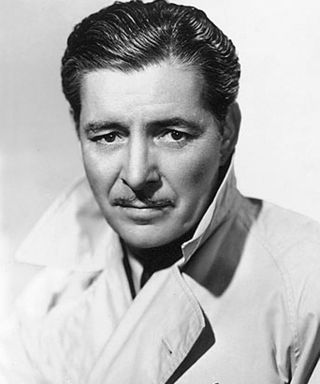
Ronald Charles Colman was an English-born actor, starting his career in theatre and silent film in his native country, then immigrating to the United States and having a successful Hollywood film career. He was most popular during the 1920s, 1930s and 1940s. He received Oscar nominations for Bulldog Drummond (1929), Condemned (1929) and Random Harvest (1942). Colman starred in several classic films, including A Tale of Two Cities (1935), Lost Horizon (1937) and The Prisoner of Zenda (1937). He also played the starring role in the Technicolor classic Kismet (1944), with Marlene Dietrich, which was nominated for four Academy Awards. In 1947, he won an Academy Award for Best Actor and Golden Globe Award for Best Actor for the film A Double Life.
Annie "Nancy" Mary Pryde Nicholson (1899–1977) was an English painter and fabric designer.
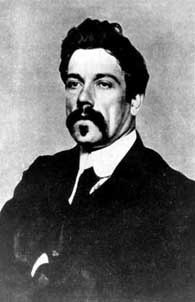
Edmund John Millington Synge was an Irish playwright, poet, writer, collector of folklore, and a key figure in the Irish Literary Revival. His best known play The Playboy of the Western World was poorly received, due to its bleak ending, depiction of Irish peasants, and idealisation of parricide, leading to hostile audience reactions and riots in Dublin during its opening run at the Abbey Theatre, Dublin, which he had co-founded with W. B. Yeats and Lady Gregory. His other major works include In the Shadow of the Glen (1903), Riders to the Sea (1904), The Well of the Saints (1905), and The Tinker's Wedding (1909).

Joseph Gerard Polchinski Jr. was an American theoretical physicist and string theorist.
Varṇa, in the context of Hinduism, refers to a social class within a hierarchical caste system. The ideology is epitomized in texts like Manusmriti, which describes and ranks four varnas, and prescribes their occupations, requirements and duties, or Dharma.
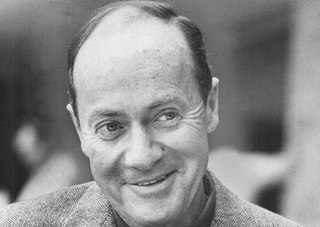
Ross Macdonald was the main pseudonym used by the American-Canadian writer of crime fiction Kenneth Millar. He is best known for his series of hardboiled novels set in Southern California and featuring private detective Lew Archer. Since the 1970s, Macdonald's works have received attention in academic circles for their psychological depth, sense of place, use of language, sophisticated imagery and integration of philosophy into genre fiction.
Keith Miles is a Welsh writer of historical fiction and mystery novels. He has also written children's books, radio and television dramas and stage plays. He is best known under the pseudonym Edward Marston, and has also written as Martin Inigo and Conrad Allen.

William Hale White, known by his pseudonym Mark Rutherford, was a British writer and civil servant. His obituary in The Times stated that the "employment of a pseudonym, and sometimes of two, was sufficient to prove a retiring disposition, and Mr. Hale White was little before the world in person."

Roderick Ninian Smart was a Scottish writer and university educator. He was a pioneer in the field of secular religious studies. In 1967 he established the first department of religious studies in the United Kingdom at the new University of Lancaster where he was also Pro-Vice-Chancellor, having already chaired one of the largest and most prestigious departments of theology in Britain at the University of Birmingham. In 1976, he became the first J.F. Rowny Professor in the Comparative Study of Religions at University of California, Santa Barbara. Smart presented the Gifford Lectures in 1979–80. In 1996, he was named the Academic Senate's research professor, the highest professorial rank at UC Santa Barbara. In 2000, he was elected president of the American Academy of Religion, while simultaneously retaining his status as president of the Inter Religious Federation for World Peace. Smart held both titles at the time of his death.

Doreen Mary Carwithen was a British composer of classical and film music. She was also known as Mary Alwyn following her marriage to William Alwyn.

Navarre Scott Momaday is a Kiowa novelist, short story writer, essayist, and poet. His novel House Made of Dawn was awarded the Pulitzer Prize for Fiction in 1969, and is considered the first major work of the Native American Renaissance. His follow-up work The Way to Rainy Mountain blends folklore with memoir. Momaday received the National Medal of Arts in 2007 for his work's celebration and preservation of indigenous oral and art tradition. He holds 20 honorary degrees from colleges and universities and is a fellow of the American Academy of Arts and Sciences.

Santa Barbara station is a passenger rail station in Santa Barbara, California, served by two Amtrak lines, the Coast Starlight and the Pacific Surfliner. The Coast Starlight runs once daily in each direction between Los Angeles and Seattle, Washington. The Pacific Surfliner trains serving this station run ten times daily between San Diego and the Santa Barbara suburb of Goleta, with two of those running in each direction to/from San Luis Obispo further to the north. The station is fully staffed with ticketing and checked-baggage services.

Sard Harker (1924) by John Masefield (1878–1967) is an adventure novel first published in October 1924. It is the first of three novels by Masefield set in the fictional nation of Santa Barbara in South America. The others are ODTAA and The Taking of the Gry.

King Arthur's messianic return is a mythological motif in the legend of King Arthur, which claims that he will one day return in the role of a messiah to save his people. It is an example of the king asleep in mountain motif. King Arthur was a legendary 6th-century British king. Few historical records of Arthur remain, and there are doubts that he ever existed, but he achieved a mythological stature that gave rise to a growing literature about his life and deeds.

The following bibliography of Aldous Huxley provides a chronological list of the published works of English writer Aldous Huxley (1894–1963). It includes his fiction and non-fiction, both published during his lifetime and posthumously.
















